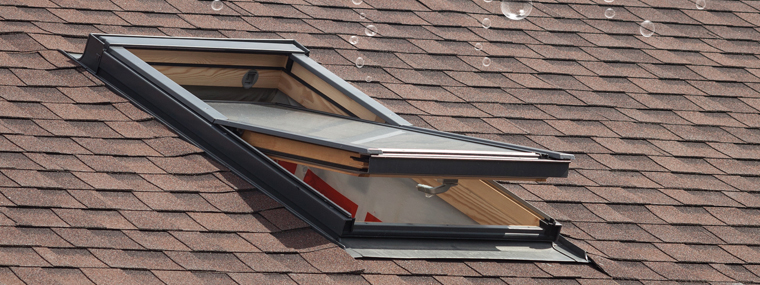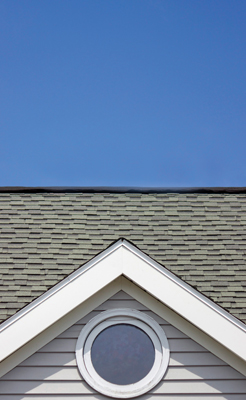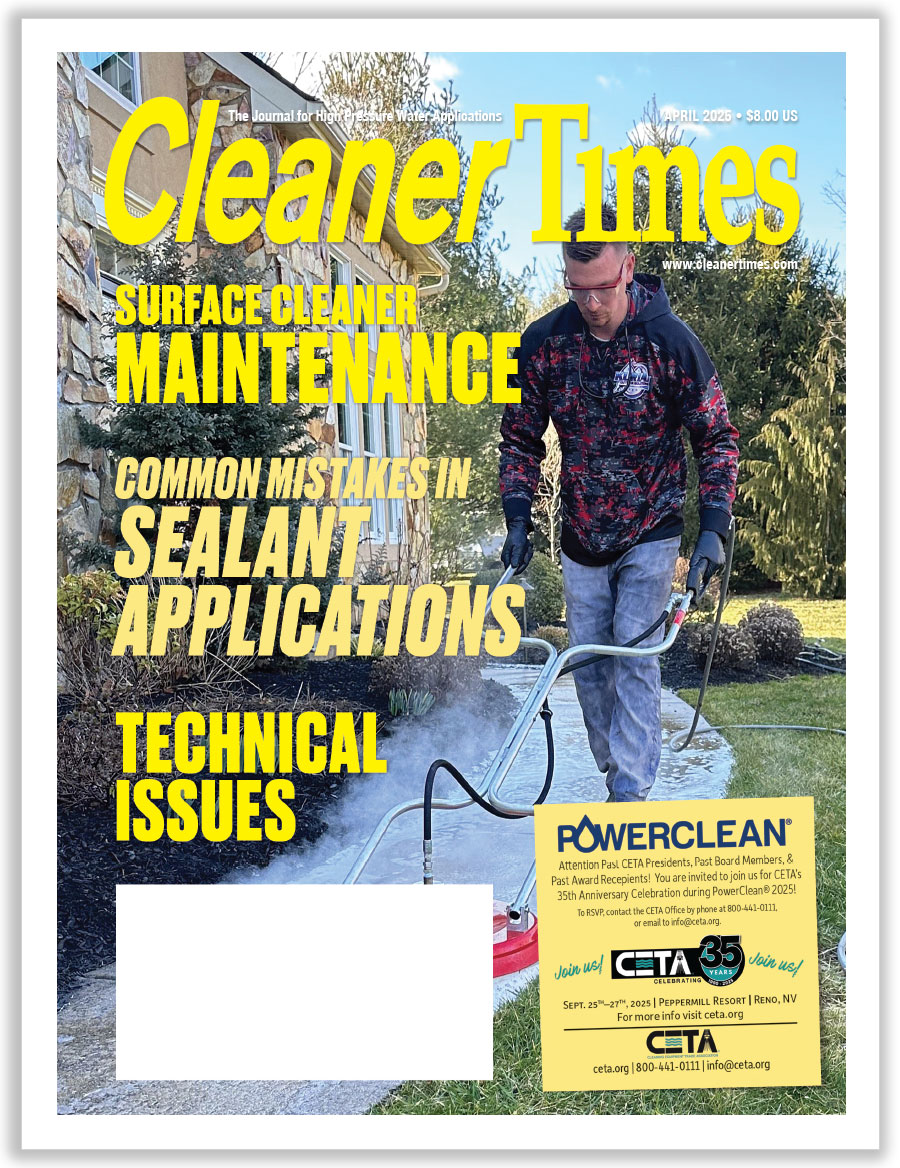
Soft Washing
Do More with Less, Do No Harm, and Do a Good Job
By Diane M. Calabrese / Published March 2018

Do more with less. Do no harm. Do a good job. That trio of ‘dos’ sums up soft washing. Gentle is the meaning built into the etymology of soft. Soft washing is above all an approach to cleaning that aims to live up to its moniker.
Soft washing has been part of our industry for almost 20 years, but it is fast becoming part of the repertoire of every contractor. The method has something for everyone, including the Environmental Protection Agency (EPA) and its advocacy for efficient water use.
Application of a cleaning solution with a minimum of pressure provides a prudent way to clean exteriors, ranging from asphalt shingles on roofs to siding on a house. Soft washing minimizes damage to the surface being cleaned and to surrounding areas. (The last thing a homeowner wants is water to seep in through a poorly caulked window because water pressure was high enough to penetrate the breach.)
Consider the perspective of a contractor. “I began my soft-wash company two years ago after losing a job in a career I’d been in for 20 years,” says Bryan Parris, owner of Tennessee Soft Wash in Knoxville, TN. “I needed a way to support my family, so I started researching businesses I could start with very little capital.”
Parris did not simply leap to a new profession. He combined careful assessment with industry-relevant expertise. “I had been a roofer when I was younger, so I began learning about roof cleaning.”
The research gave Parris a good idea of where to focus his new business. “After culling through the plethora of wrong ways to clean a roof, I settled on soft washing.”
Indeed, Parris is emphatic about the advantages. “Soft washing is the only safe way to clean a shingle roof, and the preferred way for most other roofing materials,” he says. “As a bonus, it’s also the safe way to clean stucco, EIFS [exterior insulation and finish system], siding, etc.” Parris incorporates the benefits of soft washing into his promotional materials. “We advertise ‘non-pressure, no damage’,” he explains.
There are plenty of opportunities to talk with customers and to give them the information they require to remove any misunderstandings they have about soft washing, says Parris.
What are some of the misconceptions held by prospective customers? “Some think that because we don’t use high pressure, we don’t clean as well,” says Parris. “Others think we are cleaning the whole house with a ‘soft brush.’” And there are some who misidentify the company, thinking it is a car-washing enterprise.
Parris welcomes the opportunity to introduce customers to the benefits of the soft-wash approach. “Soft washing utilizes the proper chemicals rather than high pressure to remove algae, dirt, insect webs, etc., from the house,” he explains. “We live in an area with heavy algae growth, so killing algae, moss, and lichen are priorities for us. Soft washing is the right way to do this.”
Perfect Match
The more contractors assess and reflect on the types of jobs they are tackling, the more they will see opportunities for a soft-washing approach. “It could really be said that soft washing is only as limited as your imagination,” says Tracy Handl, CEO of North American Pressure Wash Outlet in Gainesville, GA.
“Contractors who will find the cleaning method called ‘soft washing’ most ideal are ones who can let the cleaning products do the work without damaging the substrate they are working on and won’t require high psi to remove embedded soils,” explains Handl. Perhaps not surprisingly, Handl sees a great deal of soft washing being done on house and building exteriors.
The method is not limited to those surfaces by any means. “Any delicate substrate that contractors work on will benefit from being soft washed,” says Handl. “Soft washing is essentially applying a cleaning solution at low pressure that will assist in the removal of the dirt, at fairly low pressures—typically 60 to 300 psi—to ensure no damage to the substrate being worked on.”
 Contractors must gauge the requirements of a job and develop an approach. They must also have the correct equipment. “Which method the contractor picks will be determined by what he or she may already have for equipment, how much he figures he will use it, types of jobs he is performing, and of course—budget,” says Handl. With the growing interest in soft-wash methods, contractors can now find machines that are designed specifically for the approach.
Contractors must gauge the requirements of a job and develop an approach. They must also have the correct equipment. “Which method the contractor picks will be determined by what he or she may already have for equipment, how much he figures he will use it, types of jobs he is performing, and of course—budget,” says Handl. With the growing interest in soft-wash methods, contractors can now find machines that are designed specifically for the approach.
“There are many different equipment options available to achieve soft washing,” says Handl. Choose a machine carefully. “Contractors should consider the amount of time they think they will use the equipment along with cost to help choose whether they go 12-volt, gas powered, air powered, or any other configuration.”
When buying a machine of any sort, there are two fundamental considerations that apply—and they also apply to purchasing a machine to be used specifically for soft washing, says Handl. “Determine how it affects the efficiency of the washing and how it protects the substrate being cleaned.”
It’s not just the prospective customers of contractors who have misconceptions about soft washing. Some contractors are still learning all there is to know.
Handl gives an example. “The strengths at which bleach should be used can be misunderstood,” he explains. “Mostly due to terminology, meaning when strength is being spoken about, the starting strength is often not mentioned so it’s hard to follow many of the equations being laid out for folks due to interpretation of the starting strength.”
In other words, always know the context for any discussion of chemicals. Handl’s company strives to work with its contractor customers to make certain they have the information they need to get it all done correctly.
“It is easy to understand why they should apply and rinse with low pressure, but just what strength the solution is and what products can be used for soft washing are what I see our customers most confused about initially,” says Handl. Again, his company and others serving the needs of contractors, established or just venturing into soft washing, provide the contractors with the information they need.
Good Results
Control the flow. Shut off the water. Never use more water than required to complete a cleaning job. Those are just a few of the nuggets of advice the EPA repeats in its series of publications about using water efficiently. As such, soft washing is a boon to water conservation.
Just as contemporary washing machines use the minimum amount of water, the most carefully choreographed agitation, and concentrated (and typically biodegradable) cleaning solutions to clean clothes, soft-washing methods make the most of every drop of water and incorporate the wise use of chemicals.
There’s a balance to strike between chemical use and water use. If a small amount of chemical solution can reduce the amount of water needed for cleaning, that is generally a good outcome (tradeoff). As a result, soft substrates are not the only candidates for soft washing.
Whether choosing soft washing or pressure washing, heed requirements for wastewater collection. The chemical solutions that flow off with wastewater get the attention of regulators. So, too, does the residue—especially from hydrocarbons, which can build to high levels on houses in urban areas. The dislodged residue is part of wastewater.
Many homeowners do not know how dirty their house exterior is. They become accustomed to a coat of paint that has a slightly different hue than when it was applied. The same is true of the new hue taken on by roof shingles. It’s easy to demonstrate to the owner how different the familiar is from the clean. Simply choose an area of surface at eye level and rub it with a clean cloth. Streaking that looks like a finger painting will startle most who have been habituated to a veneer of dirt and organic debris.
Others besides homeowners can revitalize their roofs and siding by choosing to contract for soft washing. Home building companies can put the final touch on new construction by cleaning the exterior of homes.
“If you’re looking to ‘spit shine’ your final masterpiece, you’ll want to have it soft washed,” says Patrick Bramlett, owner, Universal Pressure Wash Solutions LLC in Herrin, IL. He knows the territory.
“From my experience doing multiple new construction and remodels, soft washing cleans up the eyesores that your labor man or woman cannot do,” says Bramlett. “And soft washing does so in a very short amount of time without harm to what you’ve just created.”
Bramlett recommends that building contractors not only clean the exterior of homes for sale, but that they also clean the exterior of homes of buyers who have already purchased and are waiting for construction to be completed. The extra effort goes a long way toward fortifying a good image. “The best part about it is the joy you’ll get to see in the customer, smiling because they get to see what they’ve paid for without a mess to clean.”





